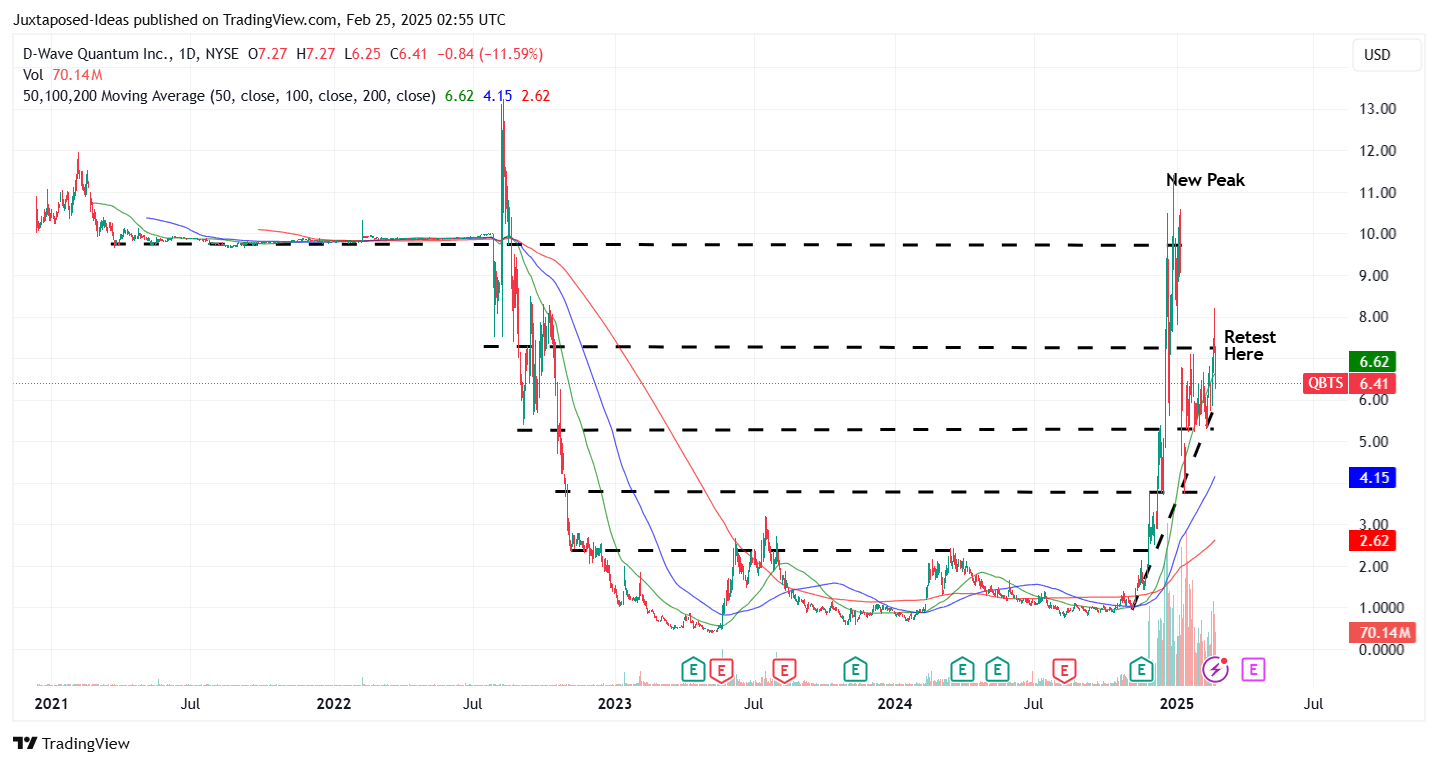D-Wave's (QBTS) Quantum Computing: A New Frontier In AI-Driven Drug Discovery

Table of Contents
The Power of Quantum Computing in Drug Discovery
Classical computing struggles with the immense complexity inherent in drug discovery. Simulating molecular interactions, predicting protein folding, and analyzing vast chemical databases require computational power far beyond the capabilities of even the most powerful supercomputers. This limitation significantly slows down the drug development process, increasing costs and timelines. Quantum computing, however, offers a potential solution. Specifically, D-Wave's approach using quantum annealing provides a unique advantage by exploring a vastly larger solution space much faster than classical methods. This allows researchers to:
- Faster simulations of molecular interactions: Quantum computers can accurately model the intricate dynamics of molecules, leading to a better understanding of how drugs interact with their targets.
- Improved accuracy in predicting drug efficacy and toxicity: More precise simulations translate into better predictions of a drug's effectiveness and potential side effects, minimizing risks and accelerating clinical trials.
- Accelerated identification of potential drug candidates: Quantum algorithms can rapidly sift through massive chemical libraries, identifying promising candidates for further investigation much more efficiently than traditional methods.
- Optimization of drug design parameters: Quantum computing can optimize various parameters during drug design, such as molecular structure and delivery methods, leading to more effective and safer medications.
D-Wave's (QBTS) Role in AI-Driven Drug Discovery
D-Wave Systems, traded as QBTS, is a leading developer of quantum annealers, a type of quantum computer particularly well-suited for optimization problems. This architecture complements classical AI algorithms, enabling powerful hybrid quantum-classical approaches crucial for drug discovery. Instead of replacing classical AI, D-Wave's quantum annealers enhance its capabilities. These hybrid approaches leverage the strengths of both quantum and classical computing, resulting in:
- Hybrid quantum-classical algorithms combining the strengths of both approaches: This synergistic approach allows researchers to tackle problems too complex for either classical or quantum computers alone.
- Integration with machine learning models for improved predictive capabilities: Quantum computing boosts the accuracy and speed of machine learning models used for predicting drug efficacy, toxicity, and other critical factors.
- Examples of successful applications or ongoing research projects: While specific details might be proprietary, D-Wave has been actively collaborating with pharmaceutical companies and research institutions on various projects exploring applications in areas like virtual screening and lead optimization. These collaborations showcase the growing acceptance of quantum computing in the field.
- Discussion of the scalability and potential limitations of D-Wave's technology in this context: While scalability remains a challenge for all quantum computing technologies, D-Wave's systems are continuously being improved, and their unique architecture makes them particularly well-suited for addressing specific problems in drug discovery. The ongoing research and development efforts continually strive to overcome these limitations.
Applications and Case Studies
D-Wave's quantum computing is already impacting various stages of the drug discovery pipeline:
- Protein-Ligand Interactions: Quantum simulations provide deeper insights into how drug molecules interact with their target proteins, leading to improved drug design.
- Virtual Screening: D-Wave's technology allows for the rapid screening of vast chemical libraries, identifying potential drug candidates significantly faster than classical methods. Case Study 1: A hypothetical example could showcase how D-Wave's virtual screening reduced the time to identify a lead compound from months to weeks, resulting in significant cost savings.
- Lead Optimization: Quantum algorithms can help refine the structure of lead compounds, improving their efficacy and reducing toxicity. Case Study 2: A theoretical case study might illustrate how quantum optimization led to a more potent drug candidate with reduced side effects, demonstrating the impact on drug development.
- De Novo Drug Design: Quantum computing assists in designing entirely new drugs, offering the potential to develop therapies for currently untreatable diseases.
- Target Identification: Quantum algorithms can aid in the identification of novel drug targets, opening up new avenues for therapeutic intervention.
Addressing Challenges and Future Outlook
Despite its potential, quantum computing in drug discovery faces challenges:
- Quantum Supremacy and Error Correction: Achieving true quantum supremacy and developing robust error correction techniques are critical for widespread adoption. Significant research efforts are focused on this.
- Scalability of Quantum Computers: Increasing the size and power of quantum computers is essential for tackling even more complex problems in drug discovery. Ongoing hardware development is tackling this directly.
- Cost-Effectiveness of Quantum Computing: The high cost of quantum computing is a barrier to entry for many researchers and pharmaceutical companies. However, ongoing efforts toward cost reduction are making quantum computing more accessible.
The future outlook is promising. Continued advancements in quantum hardware and algorithms, combined with decreasing costs, will pave the way for wider adoption of quantum computing across the pharmaceutical industry. This will accelerate the discovery and development of life-saving drugs.
Conclusion
D-Wave's (QBTS) quantum computing technology holds immense promise for revolutionizing AI-driven drug discovery. By leveraging the power of quantum annealing and hybrid quantum-classical algorithms, D-Wave is accelerating the development of new therapies and addressing some of the most significant challenges in the pharmaceutical industry. The potential for faster drug development, improved efficacy, and reduced costs is significant. Learn more about how D-Wave's (QBTS) quantum computing is transforming AI-driven drug discovery and stay informed on the latest advancements in this exciting field. Explore the potential of quantum computing to accelerate your research and development efforts.

Featured Posts
-
 Vtoro Dete Za Dzhenifr Lorns Potvrzhdenie I Podrobnosti
May 20, 2025
Vtoro Dete Za Dzhenifr Lorns Potvrzhdenie I Podrobnosti
May 20, 2025 -
 Miami Gp Hamilton Ferrari Tea Break Dispute Highlights Tensions
May 20, 2025
Miami Gp Hamilton Ferrari Tea Break Dispute Highlights Tensions
May 20, 2025 -
 March 8 Nyt Mini Crossword Answers Solve The Puzzle Today
May 20, 2025
March 8 Nyt Mini Crossword Answers Solve The Puzzle Today
May 20, 2025 -
 David Walliams And Britains Got Talent A Timeline Of Events
May 20, 2025
David Walliams And Britains Got Talent A Timeline Of Events
May 20, 2025 -
 Tv Host Lorraine Kelly Squirming After David Walliams Remark
May 20, 2025
Tv Host Lorraine Kelly Squirming After David Walliams Remark
May 20, 2025
